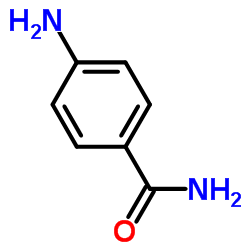Differential effects of IH636 grape seed proanthocyanidin extract and a DNA repair modulator 4-aminobenzamide on liver microsomal cytochrome 4502E1-dependent aniline hydroxylation.
S D Ray, H Parikh, E Hickey, M Bagchi, D Bagchi
Index: Mol. Cell Biochem. 218(1-2) , 27-33, (2001)
Full Text: HTML
Abstract
Previous studies from our laboratories have linked the protective abilities of IH636 grape seed proanthocyanidin extract (GSPE) with inactivation of anti-apoptotic gene bcl-XL, and modification of several other critical molecular targets such as DNA-damage/DNA-repair, lipid peroxidation and intracellular Ca2+ homeostasis. Especially, GSPE provided dramatic protection against acetaminophen (APAP)-induced hepatotoxicity, significantly increased bcl-XL expression in the liver, and antagonized both necrotic and apoptotic deaths of liver cells in vivo. However, it was not clear from this study whether anti-apoptogenic and anti-necrotic effects of GSPE were: (i) due to its interference with endonuclease activity, (ii) due to its antioxidant effect, or, (iii) due to its ability to inhibit microsomal drug metabolizing enzyme(s), such as CYP-4502E1. Since CYP-4502E1 primarily metabolizes acetaminophen in mice and rats, this study specifically focused on CYP-4502E1's catalytic activity in vitro. Overall this investigation compared the in vitro aniline hydroxylation patterns of: (i) in vivo GSPE-exposed and unexposed (control) mouse liver microsomes, (ii) induced (1% acetone in drinking water for 3 days) and uninduced rat liver microsomes in the presence and absence of GSPE in vitro, and (iii) control rat liver microsomes in the presence of an anti-APAP agent 4-aminobenzamide (4-AB) in vitro. For the in vivo assessment, male B6C3F1 mice were fed GSPE diet (ADI 100 mg/kg body wt) for 4 weeks, and liver microsomes were isolated from both control and GSPE-fed mice for aniline hydroxylation, a specific marker of CYP-4502E1 activity. Data show that hydroxylation was 40% less in microsomes from GSPE-exposed livers compared to control microsomes. Similarly, when rat liver microsomes were incubated with various concentrations of GSPE in vitro (100 and 250 microg/ml), aniline hydroxylation was inhibited to various degrees (uninduced: 40 and 60% and induced: 25 and 50%, respectively with 100 and 250 microg/ml). Influence of GSPE on hydroxylation patterns were compared with another hepatoprotective agent 4-aminobenzamide (4-AB), a well-known modulator of nuclear enzyme poly(ADP-ribose) polymerase, and the data shows that 4-AB did not alter aniline hydroxylation at all. Collectively, these results may suggest that GSPE has the ability to inhibit CYP-4502E1, and this is an additional cytoprotective attribute, in conjunction with its novel antioxidant and/or antiendonucleolytic potential.
Related Compounds
| Structure | Name/CAS No. | Molecular Formula | Articles |
|---|---|---|---|
 |
4-Aminobenzamide
CAS:2835-68-9 |
C7H8N2O |
|
Cell death protection by 3-aminobenzamide and other poly(ADP...
1994-03-15 [Biochem. Biophys. Res. Commun. 199(2) , 525-30, (1994)] |
|
Effect of inhibitors of poly(ADP-ribose)polymerase on the ra...
1989-08-01 [Radiat. Res. 119(2) , 380-6, (1989)] |
|
The development of a semi-preparatory scale supercritical-fl...
2000-07-05 [J. Biochem. Biophys. Methods 43(1-3) , 87-111, (2000)] |
|
Effect of inhibitors of poly(ADP-ribose) polymerase on the h...
1988-12-01 [Radiat. Res. 116(3) , 406-15, (1988)] |
|
Interferon-gamma inhibits insulin release and induces cell d...
1997-11-25 [Exp. Cell Res. 237(1) , 217-22, (1997)] |